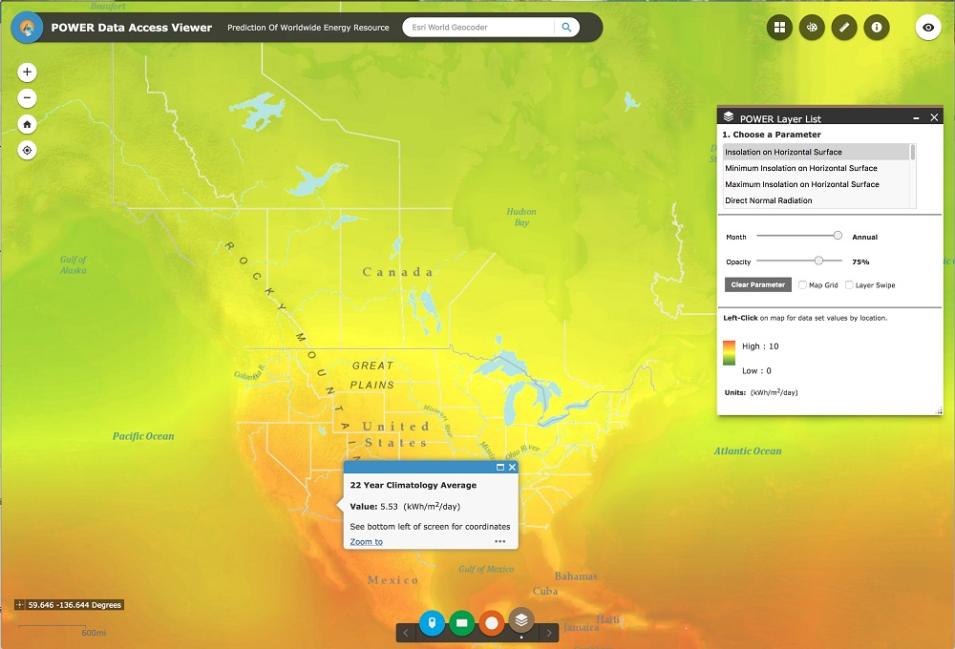Dr. Paul Stackhouse, Senior Research Scientist, NASA’s Langley Research Center, Science Directorate/Climate Sciences Branch, Hampton, VA
Research interests: Using satellite observations of the Earth-atmosphere system from multiple sources to study Earth’s global energy cycle, especially the processes that cause variability from global to regional scales. Stackhouse also develops new data products and data systems to help analyze these processes and more efficiently understand and use renewable energy sources.
Research highlights: The U.S. state of Arizona receives a lot of sunshine. According to data available through the National Oceanic and Atmospheric Administration’s National Centers for Environmental Information, Phoenix receives an average of 85% of possible sunshine each year when compared with other U.S. cities (such as Detroit, Michigan, which receives an average of 54% of possible annual sunshine). As a result, Arizona is an ideal location for using solar power.
Solar power is one example of a renewable energy resource. Other examples include wind power, geothermal power, and hydroelectric power. A recent study—Renewable Electricity Futures Study—by the Department of Energy’s National Renewable Energy Laboratory found that “renewable electricity generation from technologies that are commercially available today, in combination with a more flexible electric system, is more than adequate to supply 80% of total U.S. electricity generation in 2050 while meeting electricity demand on an hourly basis in every region of the United States.”
NASA provides ongoing support to the solar energy, energy-efficient building, and agriculture industries through its development of environmental datasets created from data collected by instruments aboard Earth observing satellites. Additional datasets are created from data derived from environmental models that simulate natural processes under future environmental conditions. Dr. Paul Stackhouse leads several NASA initiatives to create and enhance these data products and develop systems to provide these data to a global user community.


